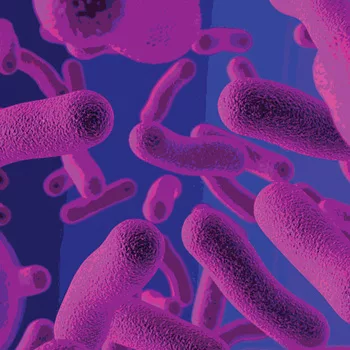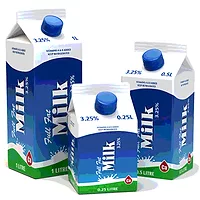The Regulation of Antimicrobials in Food Packaging

You have a new antimicrobial substance for use in food packaging materials. Does it need to be registered with the Environmental Protection Agency (EPA) as a pesticide under the Federal Insecticide, Fungicide and Rodenticide Act (FIFRA)? Does it need to be cleared by the U.S. Food and Drug Administration (FDA) as a food additive? Or does it require both? If it is considered a food additive, can it be cleared through a food contact notification, or do you need to submit a food additive petition?
After a brief history of how we got to where we are today, this article will clarify the current jurisdictional division of the regulation of antimicrobials, with a particular emphasis on food packaging.
How Antimicrobials for Food and Food Packaging Used to Be Regulated
Section 301 of the Federal Food, Drug and Cosmetic Act (FD&C Act) prevents the introduction into interstate commerce of any food that is adulterated. A “food additive” is defined in Section 201(s) as a substance that is reasonably expected to become a component of food under the intended conditions of use. FDA has regulatory authority over food additives under Section 409, and any food that contains a food additive that is not being used in accordance with an applicable regulation, exemption or food contact notification is deemed unsafe and adulterated, per se, under Section 402(a)(2)(C).
Historically, FDA exercised jurisdiction over the safety of antimicrobials used in or on food, except those used on raw agricultural commodities (RACs). The safety of pesticides used on these products was delegated by Congress to EPA. Thus, FDA regulated the safety of antimicrobials in processed food and food packaging materials under Section 409 of the FD&C Act, whereas EPA regulated their safety in RACs under Section 408.
In addition to regulating the safe use of pesticides in food, Congress determined that the manufacture and use of all pesticide products, including antimicrobials, needed to be regulated under a closely monitored licensing scheme, known as the pesticide registration process. Under FIFRA, the manufacture and distribution of pesticide products in interstate commerce is prohibited unless the product is registered by EPA. Product registrations are granted by EPA only after a thorough review of a product’s components, the manufacturing process, the intended use(s), potential exposure to humans and the environment and an assessment of the risks to health and the environment as a consequence of the pesticide product’s use.
Under FIFRA, a pesticide is defined, in part, as “any substance or mixture of substances intended for preventing, destroying, repelling or mitigating any pest.” As a result, determining whether a substance is a pesticide, and thus, subject to registration, depends on whether the product is intended for pesticidal use. The term “pest” is defined, in relevant part, as—(1) any insect, rodent, nematode, fungus, weed or (2) any other form of terrestrial or aquatic plant or animal life or virus, bacteria or other microorganism (except viruses, bacteria or other microorganisms on or in living man or other living animals) that the administrator declares to be a pest (emphasis added).
Thus, under FIFRA, organisms such as fungi, bacteria and viruses that are present in or on living beings are not pests. Therefore, products used to attack these organisms are not “pesticides” and do not require registration under FIFRA. (Generally speaking, FDA regulates these products as drugs.)
Additionally, under 40 C.F.R. Section 152.5, EPA declared that microorganisms in or on processed foods are also not “pests for purposes of FIFRA.” Thus, antimicrobials used on processed foods are not pesticides and do not require registration with EPA. (FDA regulates them as food additives.) Additionally, antimicrobials used as preservatives in food contact materials were long considered in the same light and not thought to require registration.
Thus, the regulation of antimicrobials in food-related applications was a pretty tidy package. EPA regulated pesticides used in RACs, and FDA regulated pesticides used as preservatives in processed foods and food packaging materials. However, in a classic case of what the late Senator Daniel Moynihan termed the “law of unintended consequences,” this package fell apart in 1996 with passage of the Food Quality Protection Act (FQPA).
How Antimicrobials for Food and Food Packaging Are Regulated Today
One of the primary purposes of FQPA was to replace the provision in FD&C Act that prohibits the addition of carcinogenic pesticides in food with a negligible risk standard. However, in doing so, jurisdiction to regulate the safe use of pesticides in all food products and food-related applications was switched from FDA to EPA. While EPA decided not to exercise jurisdiction over antimicrobials used in processed foods, it did assert jurisdiction over antimicrobials used in food packaging and on food contact surfaces.
Thus, confusion abounded with respect to the regulation of certain antimicrobial applications used in or on food packaging and products intended to sanitize food contact surfaces. Congress tried to correct this transfer of regulatory authority from FDA to EPA with passage of the Antimicrobial Regulation Technical Corrections Act of 1998 (ARTCA). Unfortunately, the law did only part of the job, proving anew that once authority is vested in an agency, it is a most difficult task to remove it.
In essence, ARTCA split the jurisdictional baby by establishing FDA’s primary authority for determining the food safety question with respect to antimicrobial use in most instances, while leaving intact EPA’s authority to require such products to be registered. ARTCA attempted to achieve this result by defining the term “pesticide chemical” to delineate chemicals regulated by EPA under Section 408 and specifically excluded from the definition of “food additive” under FD&C Act Section 201(s).
In essence, ARTCA excludes from the definition of “pesticide chemical” residues of antimicrobials in RACs or in process water that contacts RACs if the use occurs in a food processing facility. These residues of antimicrobial pesticides are considered food additives when used in these circumstances and therefore are subject to FDA regulation as food additives under Section 409 of the FD&C Act. EPA still maintains jurisdiction over RACs in all other cases.
Also excluded from the definition of “pesticide chemical” are residues of antimicrobial pesticides used in or on food packaging materials. Thus, the safety of these products is determined by FDA under Section 409 of FD&C Act. While jurisdiction for the safety of antimicrobial residues for these uses shifted back to FDA after ARTCA, the products intended for these uses are still pesticides and must also be registered with EPA.
EPA also has deferred to FDA on safety questions for antimicrobials used in food contact surfaces that are not intended to have an ongoing effect on any portion of the object (or the intended ongoing effect is only on a portion with no food contact). However, where an antimicrobial is intended to have any ongoing effect on a permanent or semipermanent food contact article—such as on a countertop, a cutting board or a conveyor belt to reduce contamination of food products—EPA has retained jurisdiction over the food safety question. For these uses, FDA clearance of the product is not necessary; rather, residues of these products in or on food must comply with a tolerance or exemption from tolerance as established by EPA under Section 408 of the FD&C Act.
It is important to note that even where EPA suggests that it has relinquished jurisdiction over the safety of food packaging, it in fact has not done so completely. Following the passage of ARTCA, EPA maintained that although it would not need to establish a tolerance or tolerance exemption for these products, it still was required by a little-noticed provision added to FIFRA by FQPA to judge the human health effects of pesticide products, including those used in food packaging materials, as part of the registration process. Thus, what EPA giveth with one hand, it taketh away with the other.
The most unusual thing about this review, though, is the standard by which it is conducted by EPA. Although FDA may determine a food contact use to be safe, EPA maintains that this determination by its sister agency is insufficient for its purposes because FQPA requires the use of a different risk assessment procedure.
In sum, all uses of antimicrobials in or on food packaging are regulated as food additives by FDA regardless of whether the antimicrobial is intended to have an ongoing effect on any portion of the packaging. Such uses include production aids, materials preservatives or those that have a sanitizing effect. However, while jurisdiction over the safety of antimicrobial residues used in or on food packaging materials is under FDA purview, these products are still pesticides and must be registered with EPA, whose review may well include another food safety risk assessment.
Summary of Antimicrobial Regulation in Food and Food Packaging
Although efforts have been made to clarify the dual jurisdiction of the agencies’ regulation of antimicrobials in food applications, the matter is still about as clear as mud. Nonetheless, here are the rules of the game under FD&C Act and FIFRA, as amended by FQPA, as amended by ARTCA:
• Antimicrobial uses directly on processed foods are regulated by FDA as food additives under Section 409 of the FD&C Act and remain outside EPA jurisdiction (except for ethylene and propylene oxide use).
• Antimicrobial residues in RACs are regulated by EPA as pesticide chemicals under Section 408, unless the antimicrobial is used in a food processing facility, in which case the residue is a food additive regulated by FDA under Section 409.
• Antimicrobials in food packaging are regulated by FDA as food additives under Section 409; however, they also require registration with EPA under FIFRA.
• Antimicrobials used in or on permanent/semipermanent food contact surfaces, which are not intended to have an ongoing effect on the food contact surface, are regulated by FDA as food additives. If, however, the intended effect is ongoing, that is, intended to maintain the article as bug-free, EPA exercises jurisdiction over the food safety issue.
In all cases, except those involving processed foods, the antimicrobial used will always be considered a pesticide for purposes of FIFRA and require registration with EPA regardless of FDA’s jurisdiction over the matter.

Looking for quick answers on food safety topics?
Try Ask FSM, our new smart AI search tool.
Ask FSM →








